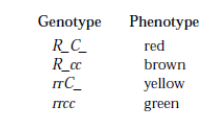#Question id: 5195
#General Aptitude
Sum of four consecutive even number is equal to twice the third number . the sum of all the four numbers is:
#Question id: 5196
#General Aptitude
In the exam, one noticed that his answer and his friend’s answer differ, and his friend’s answer had a decrease of 315 . this happened because instead of multiplying with 23, he multiplied with 32. What can be the original answer?
#Question id: 5197
#General Aptitude
abcde is a five digit number when multiplied by 13 it gives a number,purely formed by the digit 9. Then the value of abcde is :
#Question id: 5198
#General Aptitude
If n is a natural number , then (6n^2+6n) is always divisible by :
#Question id: 5199
#Unit 11. Evolution and Behavior
For mapping studies of genomes, most of which were far along before 2000, the 3 -stage method was often used. Which is the usual order in which the stages were performed, assuming some overlap of the three?
#Question id: 5200
#Unit 11. Evolution and Behavior
What is the difference between a linkage map and a physical map?

